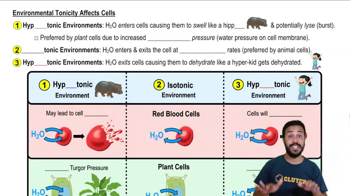Multiple Choice
Why is there a concentration gradient of NaCl in the medulla of the kidney?
 Verified step by step guidance
Verified step by step guidance Verified video answer for a similar problem:
Verified video answer for a similar problem:



 4:51m
4:51mMaster Concentration Gradients and Diffusion with a bite sized video explanation from Bruce Bryan
Start learning